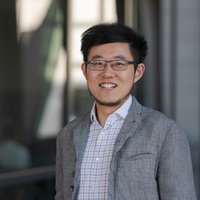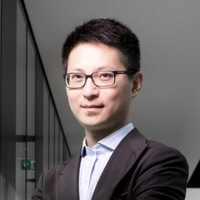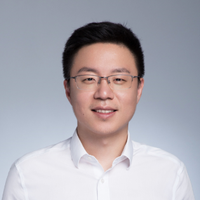Non-invasive treatment of neurological diseases has been a
worldwide problem. However, safe and effective treatments for neurological
disorders are largely lacking. The most effective treatment, implanted
electrodes, is too traumatic to be universal.
Optogenetics is a revolutionary approach to optically
modulate the activity of neurons developed in recent years. Scientists have
found that certain bacterial ion channel proteins respond to blue or
yellow-green light, opening and closing ion channels to stimulate or inhibit
specific nerves. In 2005, scientists expressed these light-sensitive proteins
in neurons for the first time, making it possible for light to control neural
activity. However, the blue light that ion channel proteins can respond to has weak penetration, and how that blue light penetrates the brain tissue to
reach the deep part of the brain is still a difficult problem.
Shuo Chen, a postdoctoral fellow at the University of
California, Berkley, invented a groundbreaking method where he has succeeded in developing a minimally invasive deep brain stimulation technique that
allows precise control of neurons by tissue-penetrating near-infrared light
(NIR). To be specific, he employed upconversion nanoparticles in the deep brain
to convert tissue-penetrating NIR into blue-green light for optogenetically
activating close-by neurons. NIR, on the other hand, is easier to penetrate
biological tissue. This makes it possible for scientists to control neurons.
Chen's achievement is largely thanks to his cross-disciplinary
backgrounds in synthetic chemistry and neuroscience. From 2008 to 2015, Chen
conducted his Ph.D. in the Department of Chemical Life Engineering at the University
of Tokyo. He stumbled upon news that the RIKEN Brain Science Institute was providing
one-year training in brain science, which piqued his interest in brain
science.
However, there were not many previous materials to refer to
in this cross-cutting area. "No funds and no equipment when we started," described Chen at that time. One day, he used infrared light
to test the ventral tegmental area of an experimental mouse, successfully
detecting dopamine downstream, proving the feasibility of this method. With great
support from his supervisor, Dr. Thomas McHugh, he expanded the technology to
applications in different brain regions, such as recalling memory engram in the
hippocampus of the mouse brain.
From a conceptual perspective, Chen pioneered a new type of
approach to non-invasive deep brain stimulation that
relies on local energy conversion. Future efforts may underpin the
transformation of NIR or ultrasound into heat, and the conversion of X-ray into
visible light. When combined with the recently developed technology for
non-invasive gene delivery to the brain, truly non-invasive high-precision deep
brain stimulation without surgical intervention can be realized.
Chen hopes to make more contributions to the treatment of
brain diseases in the field of brain science in the future.




